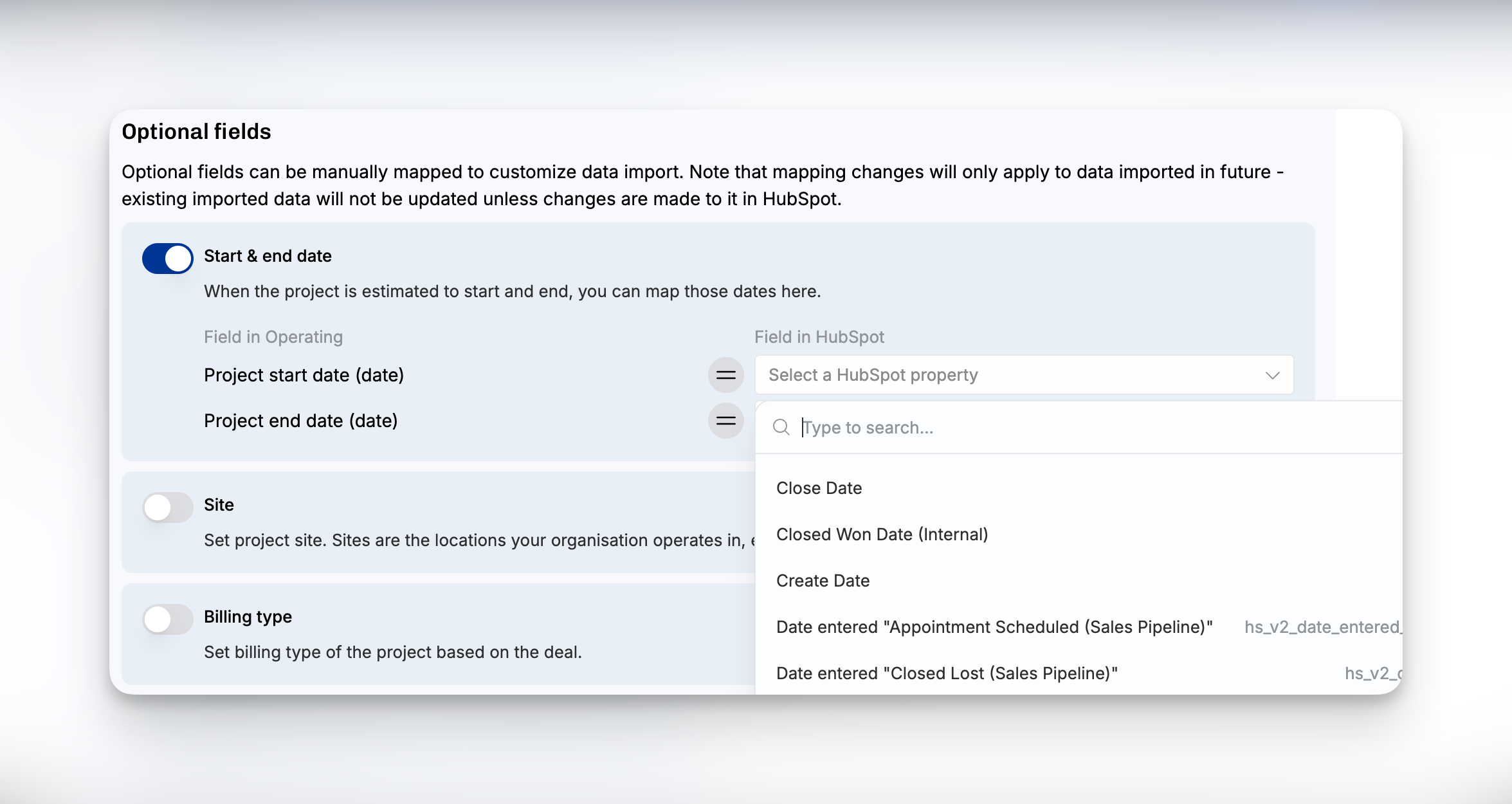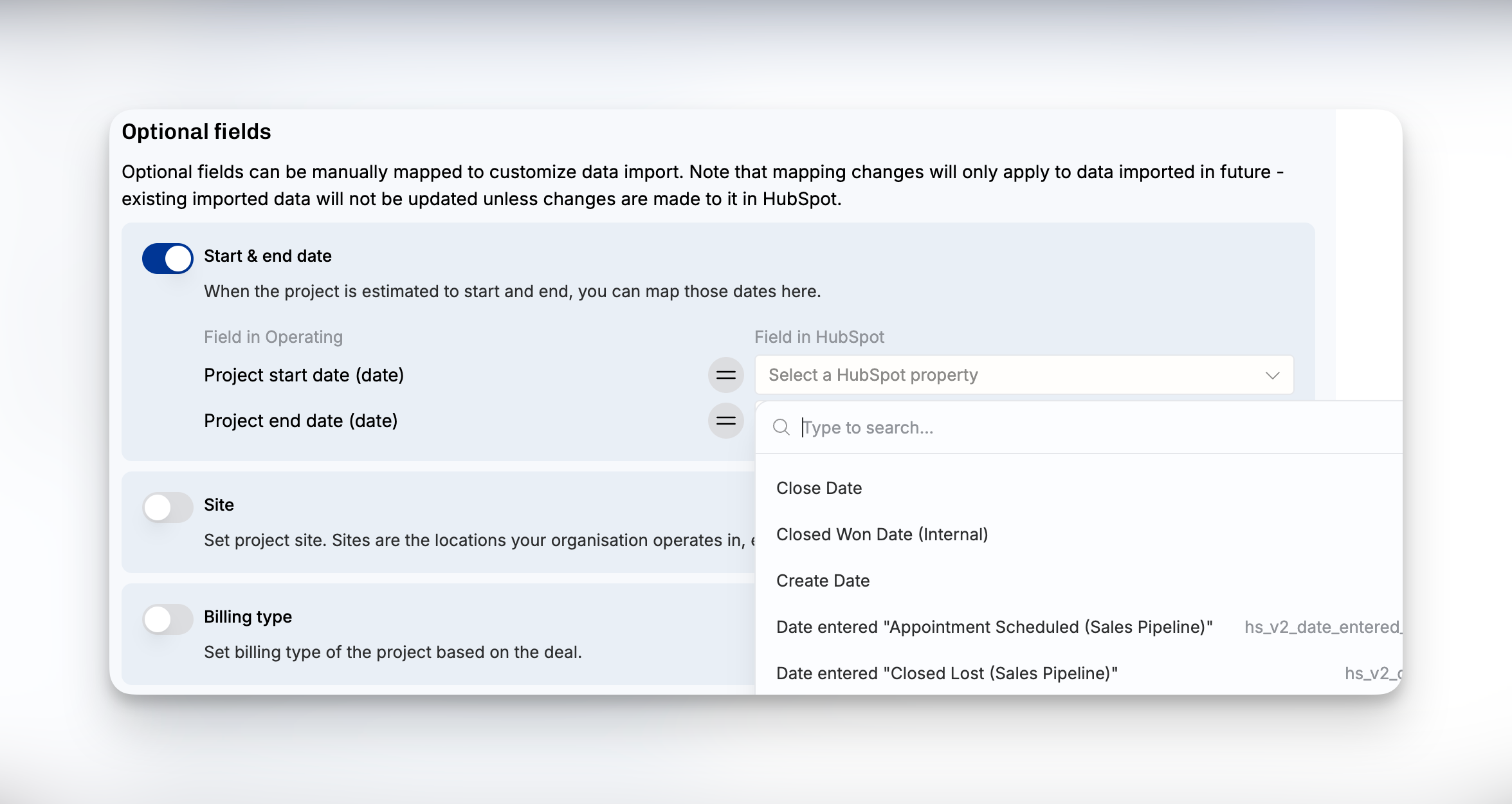HubSpot Integration Update: From Sales Pipeline to Delivery Planning Without Gaps
Why this update matters
In many consulting and professional services firms, the transition from a signed deal to a live project is one of the most error-prone steps. Sales teams work in HubSpot. Delivery teams work in Operating. Without a strong connection between the two, information is re-entered manually, key details get lost, and resource planning happens too late.
The updated HubSpot CRM integration in Operating.app eliminates that gap. Deals from HubSpot flow automatically into Operating as tentative projects normally as before, along with linked companies and deal owners. This gives delivery teams an early line of sight into upcoming work and ensures that the sales commitments match what can realistically be staffed.
A smoother sales-to-delivery handover
The integration is designed to make the handover from sales to delivery straightforward:
- Automatic tentative projects: Deals in selected HubSpot pipelines and stages appear in Operating as tentative projects, so planning can start before the contract is signed.
- Company and deal owner sync: Client records and account ownership move across automatically, avoiding duplicate data entry.
- Name synchronization: Project and client names can stay in sync with HubSpot if enabled, keeping records aligned as sales information evolves.
- The update — Custom field mapping: Beyond the default fields (name, description, owner, company, pipeline, stage, amount, probability, closed date), you can map additional deal properties to Operating. This includes:
- Start & end dates, so delivery teams can see when projects are expected to run.
- Site, useful for firms operating across multiple locations.
- Billing type, to ensure financial setup matches sales commitments.
- Groups and tags, providing context such as business unit, region, or client segmentation.
This level of detail means delivery teams aren’t left chasing sales for missing information. Everything needed to scope, staff, and track projects is already there.

Better capacity forecasting with less effort
Forecasting capacity has traditionally required time-consuming reconciliations between CRM data and delivery systems. The updated integration removes that manual effort:
- Pipeline visibility: Delivery leads see deals before they close, giving them time to prepare resources.
- Filtering options: Only the right deals flow through, based on pipeline, stage, or custom criteria, keeping the pipeline-to-forecast clean.
- Aligned data: Start dates, billing types, and tags help forecast demand more precisely and reduce the risk of under- or over-allocation.
- Matching consultants to projects: Easy to match the right consultants to the right projects.
Instead of relying on spreadsheets or manual updates, managers can rely on a single view of upcoming work and staffing needs. This not only saves time but increases the accuracy of utilization forecasts.
What this means for your team
- Sales teams no longer need to re-enter information or worry about details being dropped in the handover.
- Delivery teams can see upcoming workload earlier and with more complete context.
- Leadership gets more reliable capacity and revenue forecasts with far less administrative effort.
The result is a more predictable flow from pipeline to staffed projects, which strengthens both client delivery and internal efficiency.
Conclusion
The updated Operating.app + HubSpot CRM integration makes two core processes easier: handing over from sales to delivery and forecasting future capacity. By importing deals as tentative projects, syncing companies and deal owners, and allowing flexible field mapping, the integration ensures that delivery teams can act on accurate data without delays.
For firms using HubSpot to manage sales, this integration closes the loop. It aligns pipeline visibility with staffing decisions, reduces manual work, and gives leadership the data they need to plan confidently.





